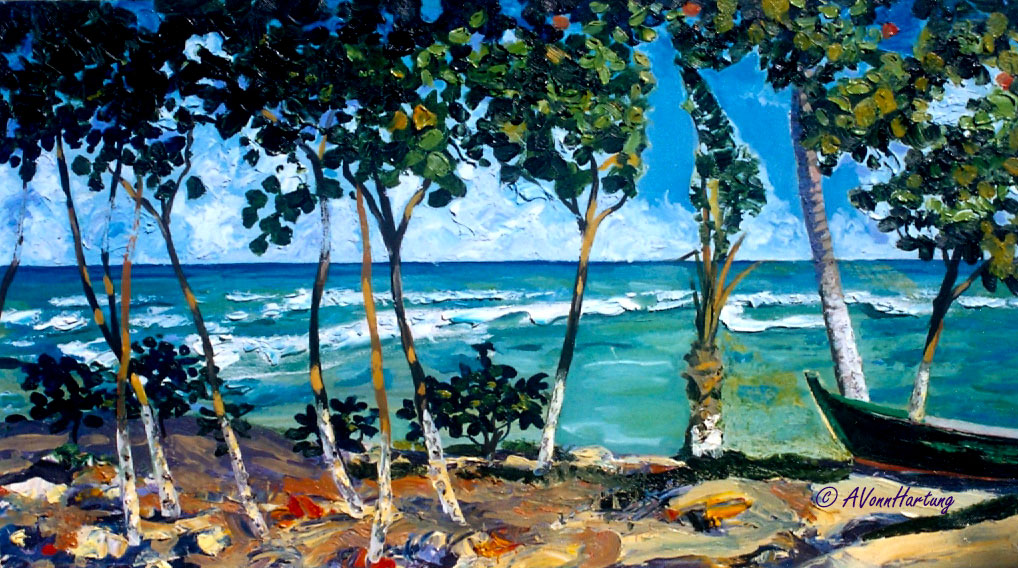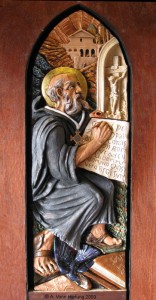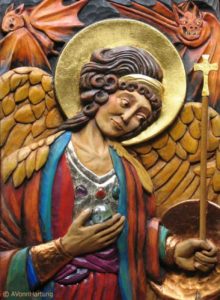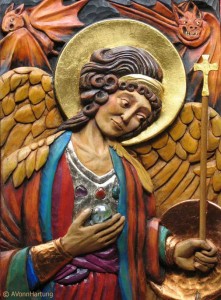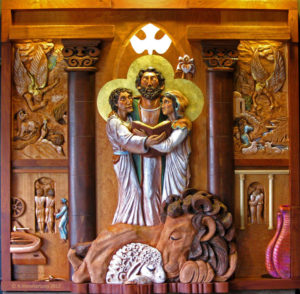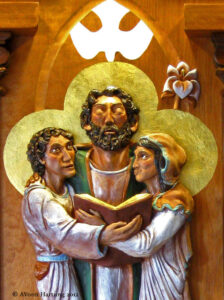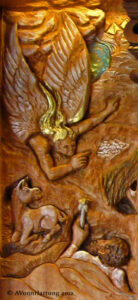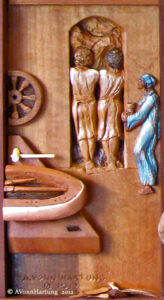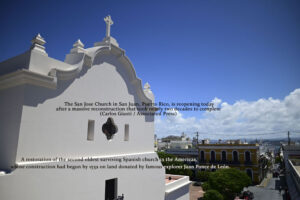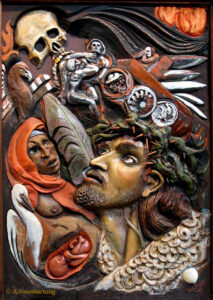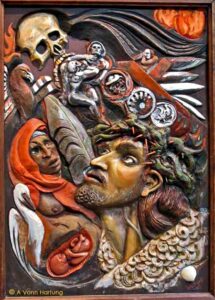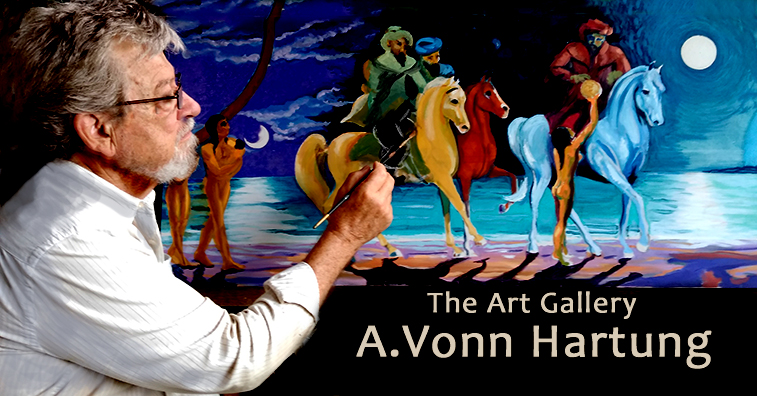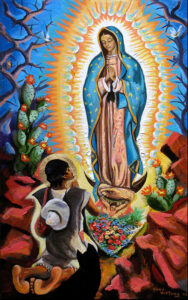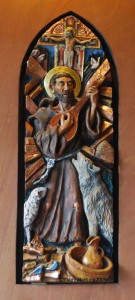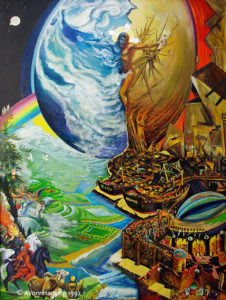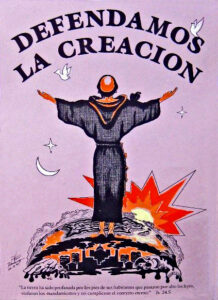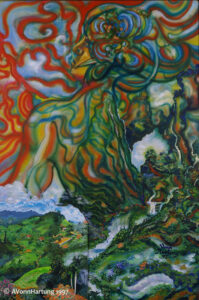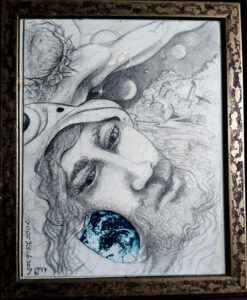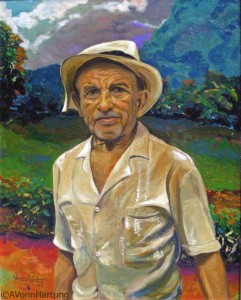READ THIS IN ENGLISH
Mi última comisión
Estatua de tamaño natural de Santa Dimpna
Santo mártir irlandés del siglo VII.
Ver el video
Tallado en madera de cedro tropical. Encargado por el Padre Mark O’Donnell para la Iglesia Católica Saint Joseph’s en New London Connecticut.
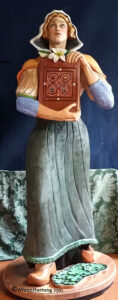
¿Cómo surgió esta estatua?
Extractos de un mensaje a sus feligreses del Padre Mark O’Donnell,
Pastor de la Iglesia Católica St. Joseph
Santa Dimpna, una santa para las edades.
Cuando llegué por primera vez a la parroquia de St. Joseph hace casi 10 años, tres feligreses se me acercaron y me preguntaron: “Padre, ¿quién es el santo patrón de los que padecen enfermedades nerviosas, mentales y emocionales?” Sin detenerme dije, “Saint Dymphna”. Después de que les conté su historia, me dijeron que les encantaría tener una estatua de ella en el santuario porque todas las familias se han visto afectadas por enfermedades mentales y emocionales. Dije que trataría de conseguir una estatua de ella para que pudiéramos orar por su intercesión y por la curación de todos los que sufren.
Bueno, han pasado casi 10 años y la necesidad de la ayuda de Santa. Dimpna no podría ser más urgente en el mundo en el que vivimos. La pandemia de Covid 19 ha afectado mental y emocionalmente la salud y el bienestar de todos. Trágicamente, ha cobrado demasiadas vidas a través de la enfermedad en sí, y las vidas de los adictos a las drogas y de algunos que se suicidaron desesperadamente porque se sentían aislados y deshumanizados.
Cuando Neil Hartung, un maravilloso feligrés, murió inesperadamente en la Fiesta de la Inmaculada Concepción el 8 de diciembre de 2019, conocí a su hermano Vonn Hartung, un artista de renombre en Puerto Rico. Neil siempre hablaba con cariño de su hermano y con amor fraterno. Hablé con Vonn y le propuse comenzar a investigar un poco sobre la historia de este gran santo. Quedó cautivado con su valiente vida y martirio. En cada detalle, investigó su vida y estuvimos de acuerdo en que realmente se necesitaba una estatua aquí en New London para que todos oraran por su intercesión. Comencé a compartir esta noticia con las personas que se me acercaron originalmente hace 10 años y estaban completamente de acuerdo. Poco a poco se ha corrido la voz de que se estaba creando Santa Dimpna para la Iglesia St. Joseph en la comunidad católica St. Brendan the Navigator.
Encargué a Vonn Hartung que diera vida artísticamente a este gran santo
Comenzó con cedro tropical y pegó la madera en un bloque sólido. Poco a poco ha estado tallando y formando el bloque de madera en una estatua de cinco pies de Santa Dymphna … damos gracias a Dios por este santo maravilloso de todas las edades, especialmente hoy. Esperamos que Santa Dimpna llegue el primero de septiembre de este año…Fr. Mark
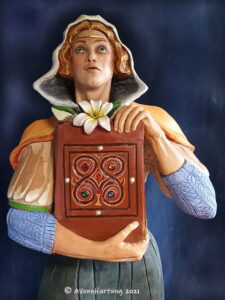
Compre una impresión giclée
“Según la tradición católica y ortodoxa, Dimpna nació en Irlanda en el siglo VII. Su padre Damon era un rey pagano y su madre una devota cristiana.
Cuando Dimpna tenía 14 años, se consagró a Cristo y tomó un voto de castidad. Poco después, su madre murió. Damon había amado profundamente a su esposa y, a raíz de su muerte, su salud mental se deterioró drásticamente. Eventualmente los consejeros del rey lo presionaron para volver a casarse. Damon estuvo de acuerdo, pero solo con la condición de que su novia fuera tan hermosa como su difunta esposa. Después de buscar infructuosamente, Damon comenzó a desear a su hija debido a su gran parecido con su madre.
Cuando Dimpna se enteró de las intenciones de su padre, juró mantener sus votos y huyó de su corte junto con su confesor, el padre Gerebernus, dos servidores de confianza y el bufón del rey. Juntos navegaron hacia el continente, y finalmente aterrizaron en la actual Bélgica, donde se refugiaron en la ciudad de Geel.
¡Su padre la localiza!
Una tradición establece que una vez instalados en Geel, Dimpna construyó un hospicio para los pobres y enfermos de la región. Sin embargo, fue a través de su riqueza que su padre eventualmente averiguaría su paradero, ya que algunas de las monedas utilizadas le permitieron a su padre rastrearlas hasta Bélgica. Damon envió a sus agentes a perseguir a su hija y sus compañeros. Cuando se descubrió su escondite, viajó a Geel para recuperar a su hija. Ordenó a sus soldados que mataran a Gerebernus y trató de obligar a Dymphna a regresar con él a Irlanda, pero ella se resistió. Furioso, Damon sacó su espada y le cortó la cabeza a su hija. Se dice que tenía 15 años cuando murió.
Después de que Dimpna y Gerebernus fueran asesinados, los residentes de Geel los enterraron en una cueva cercana. Años más tarde, decidieron trasladar los restos a un lugar más adecuado. Algunos de sus restos se encuentran en el santuario de Dimpna en Massillon, Ohio, Estados Unidos.
Así comenzó una tradición para el cuidado continuo de las personas con afecciones psiquiátricas que ha perdurado durante más de 500 años y que todavía se estudia y se admira en la actualidad. Los pacientes eran, y siguen siendo, tomados en las casas de los habitantes de Geel. Nunca se les llama pacientes, se les llama internos y se les trata como miembros ordinarios y útiles de la ciudad. Se les trata como miembros de la familia de acogida. Trabajan, con mayor frecuencia en trabajos domésticos, y, a cambio, se convierten en parte de la comunidad. Algunos permanecen unos meses, algunas décadas, otros durante toda su vida. En su apogeo en la década de 1930, más de 4.000 ‘internos’ se alojaron con los habitantes de la ciudad “.
Santa Dimpna es la santa patrona de las enfermedades mentales y la ansiedad.
Su festividad es el 15 de mayo
Oración a Santa Dimpna
Padre, nuestro Dios,que bondadosamente elegiste a Santa Dimpna como Patrona de aquellos afligidos con problemas mentales y nerviosos.
Ella es nuestra inspiración y un símbolo de caridad a los muchos que ruegan por su intercesión.
Que a través de las oraciones de esta joven pura y mártir, puedan nuestros sufrimientos encontrar alivio y consuelo, especialmente por los que te pedimos por ________
Te suplicamos Padre, escuches las plegarias a nuestro nombre de Santa Dimpna.
Dale a aquellos por los que rezamos, paciencia en el sufrimiento y resignación con Tu voluntad.
Llenalos con esperanza y dales el alivio y sanación que ellos tanto desean.
Te lo pedimos por Jesucristo nuestro Señor,
quien sufrió su propia agonía en el huerto. Amén.
